The hospitality industry is ever-evolving, with design trends shifting to meet the changing needs and desires of guests. Several key trends are set to shape the future of hospitality interior design.
From sustainability to technology integration, these trends aim to enhance guest experiences while ensuring operational efficiency and aesthetic appeal. Here, we explore the top trends in hospitality interior design for 2024.
-
Sustainable and Eco-friendly design
Sustainability continues to be a significant focus in hospitality design. Today’s travelers are more environmentally conscious and prefer to stay in accommodations that reflect their values.
Hotels, resorts and vacation homes are increasingly adopting eco-friendly practices, incorporating sustainable materials, and implementing energy-efficient systems.
Key elements
- Recycled materials: Using recycled and upcycled materials for furniture and decor.
- Energy efficiency: Incorporating energy-saving technologies like LED lighting, smart thermostats, and solar panels.
- Water conservation: Installing low-flow fixtures and water recycling systems.
Designers are also focusing on biophilic design, which integrates natural elements like indoor plants, natural light, and water features to create a harmonious environment that promotes well-being.
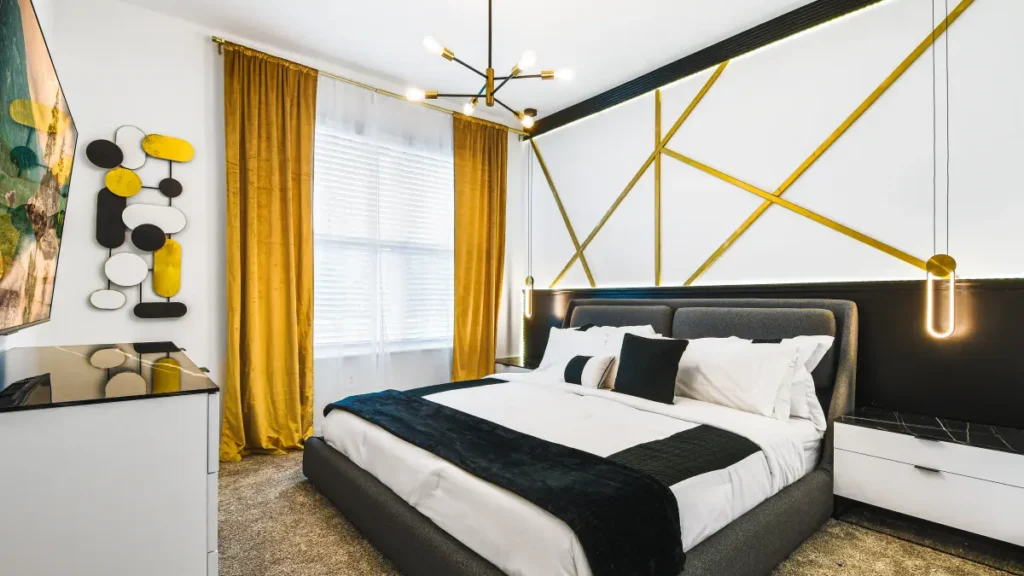
-
Smart rooms and technology integration
Technology is revolutionizing the hospitality industry, and smart rooms are becoming a standard expectation. Guests now look for seamless technology integration that offers convenience and enhances their stay.
Key elements
- Voice-activated controls: Implementing voice-activated systems for lighting, temperature, and entertainment.
- Mobile check-in and keyless entry: Allowing guests to check in via mobile apps and use their smartphones as room keys.
- Personalized experiences: Using data to personalize guest experiences, from preferred room settings to customized recommendations.
Hotels and vacation homes are also investing in high-speed internet and smart TVs to ensure guests stay connected and entertained. Looking to incorporate these innovations professionally? Explore our hospitality design firms for interior design for hotels,
-
Health and wellness focus
The wellness trend is gaining momentum, with hotels and vacation homes prioritizing the health and well-being of their guests. This trend encompasses everything from design elements that promote relaxation to amenities that support physical and mental health.
Hospitality interior design key elements
- Wellness rooms: Designing rooms with features like air purifiers, circadian lighting, and soundproofing.
- Fitness facilities: Offering state-of-the-art fitness centers, yoga studios, and meditation spaces.
- Spa-like bathrooms: Creating spa-inspired bathrooms with rain showers, soaking tubs, and organic toiletries.
Hotels are also incorporating outdoor spaces, such as rooftop gardens and walking paths, to encourage guests to spend time in nature.
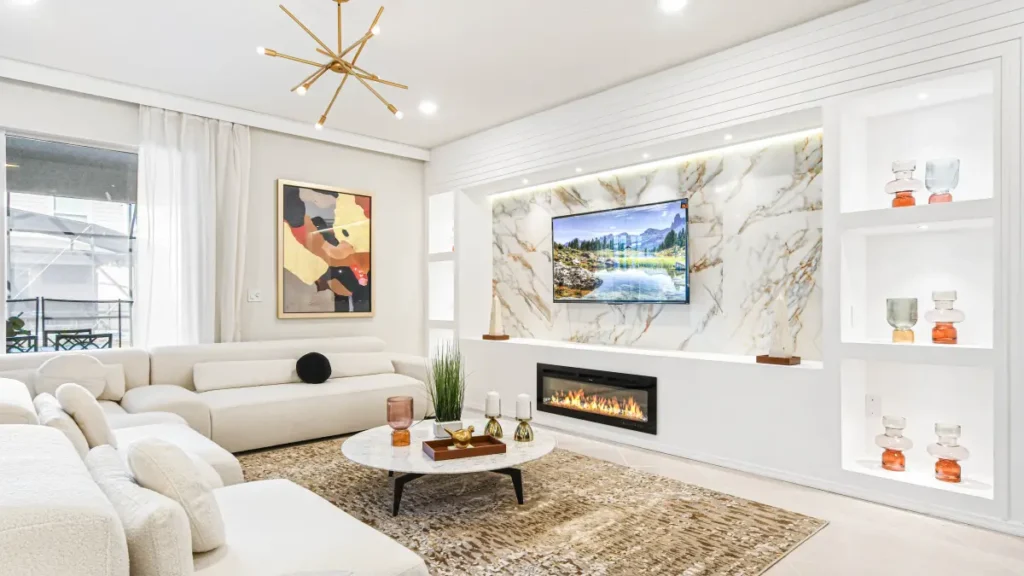
-
Local and authentic experiences in hospitality interior design
Travelers today seek authentic experiences that connect them to the local culture and community. This trend is reflected in the design of hospitality spaces that showcase local art, materials, and craftsmanship.
Key elements
- Local art and decor: Featuring artwork and decor from local artists and artisans.
- Cultural elements: Incorporating design elements that reflect the local heritage and culture.
- Community engagement: Partnering with local businesses and organizations to offer unique guest experiences.
Hotels and vacation homes are creating spaces that tell a story, providing guests with a deeper connection to the destination. If you manage vacation properties and want to offer a memorable experience, consider our vacation rental design service.
-
Flexible and multifunctional spaces
The rise of remote work and the blending of business and leisure travel have led to a demand for flexible and multifunctional spaces. Hotels are designing areas that can easily transition from workspaces to social hubs.
Key elements
- Hybrid spaces: Creating rooms and suites with dedicated work areas, as well as comfortable spaces for relaxation.
- Adaptable furniture: Using modular and multifunctional furniture that can be reconfigured as needed.
- Collaborative areas: Designing communal spaces like co-working lounges and business centers that foster collaboration.
This trend also extends to dining areas and meeting rooms, which are designed to be versatile and adaptable.
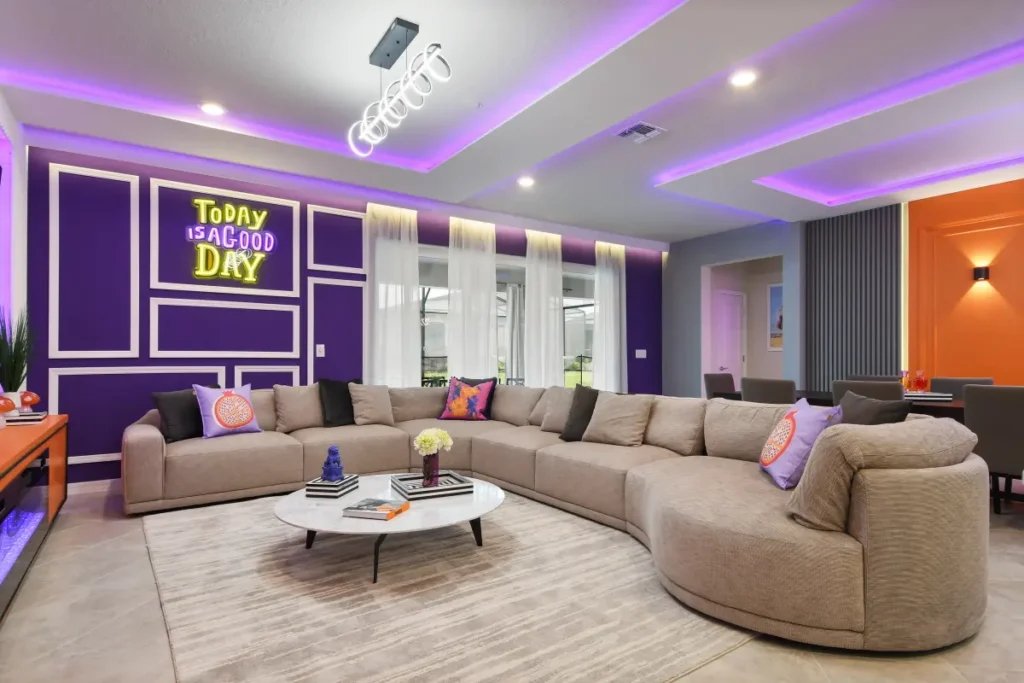
-
Luxurious minimalism
Minimalism is evolving to incorporate elements of luxury, creating spaces that are both simple and opulent. This trend emphasizes quality over quantity, focusing on high-end materials and craftsmanship.
Key elements
- Clean lines and open spaces: Designing interiors with clean lines, open spaces, and minimal clutter.
- High-quality materials: Using luxurious materials like marble, brass, and high-thread-count linens.
- Thoughtful details: Incorporating bespoke furniture and decor that add a touch of elegance and sophistication.
The goal is to create a serene and refined environment that allows guests to unwind and feel pampered.
-
Sustainable luxury
Combining sustainability with luxury, this trend caters to guests who seek eco-conscious accommodations without compromising on comfort and style. Hotels and vacation homes are finding innovative ways to offer sustainable luxury experiences.
Key elements
- Eco-friendly luxuries: Providing sustainable amenities like organic linens, natural toiletries, and locally sourced foods.
- Green building practices: Implementing sustainable construction and design practices, such as using reclaimed wood and energy-efficient systems.
- Sustainable dining: Offering farm-to-table dining experiences with locally sourced, organic ingredients.
This trend highlights that luxury and sustainability can coexist, providing guests with an indulgent yet responsible stay.
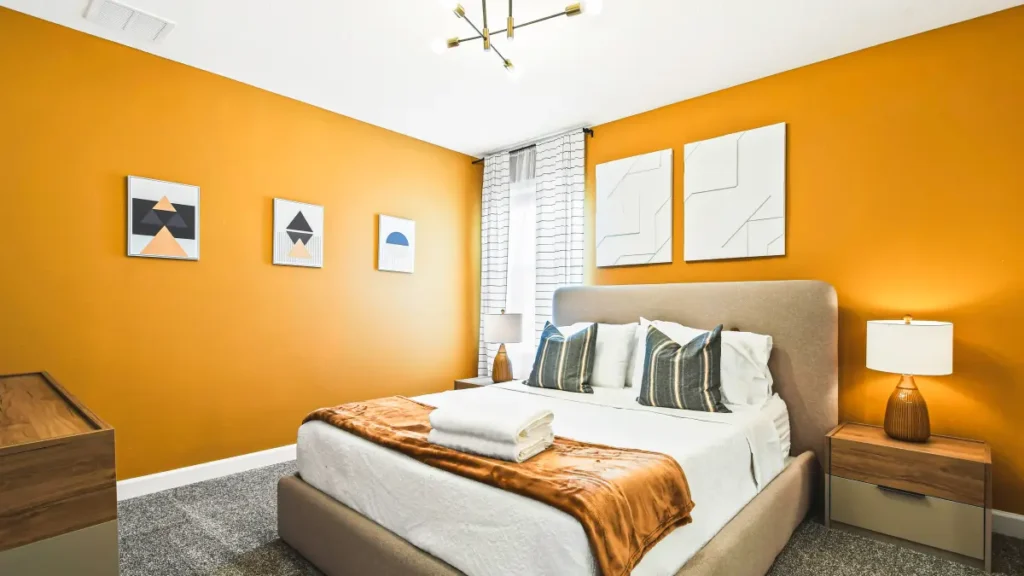
- Bold and vibrant aesthetics
While minimalism and neutral palettes have dominated in recent years, bold and vibrant aesthetics are making a comeback. This trend embraces rich colors, striking patterns, and eclectic decor.
Key elements
- Vibrant colors: Using bold colors like deep blues, emerald greens, and rich purples to create a dynamic atmosphere.
- Pattern play: Incorporating patterns and textures through wallpapers, textiles, and rugs.
- Eclectic decor: Mixing and matching different styles and eras to create a unique and lively space.
Hotels and vacation homes are using this trend to create memorable and Instagram-worthy interiors that stand out.
-
Experiential design
Experiential design focuses on creating immersive environments that engage the senses and evoke emotions. This trend goes beyond aesthetics to consider how spaces make guests feel.
Key elements
- Sensory experiences: Designing spaces that engage multiple senses, from scent and sound to touch and sight.
- Interactive elements: Incorporating interactive features like digital art installations and touch-responsive surfaces.
- Storytelling spaces: Creating spaces that tell a story or evoke a particular theme or narrative.
This approach aims to create memorable experiences that leave a lasting impression on guests.
The hospitality interior design trends for 2024 reflect a shift towards sustainability, technology integration, and personalized experiences.
By embracing these trends, hotels can create spaces that not only meet the evolving needs of guests but also set themselves apart in a competitive market.
Whether through eco-friendly practices, smart technology, or bold aesthetics, the goal is to provide an exceptional and memorable stay that resonates with today’s discerning travelers.
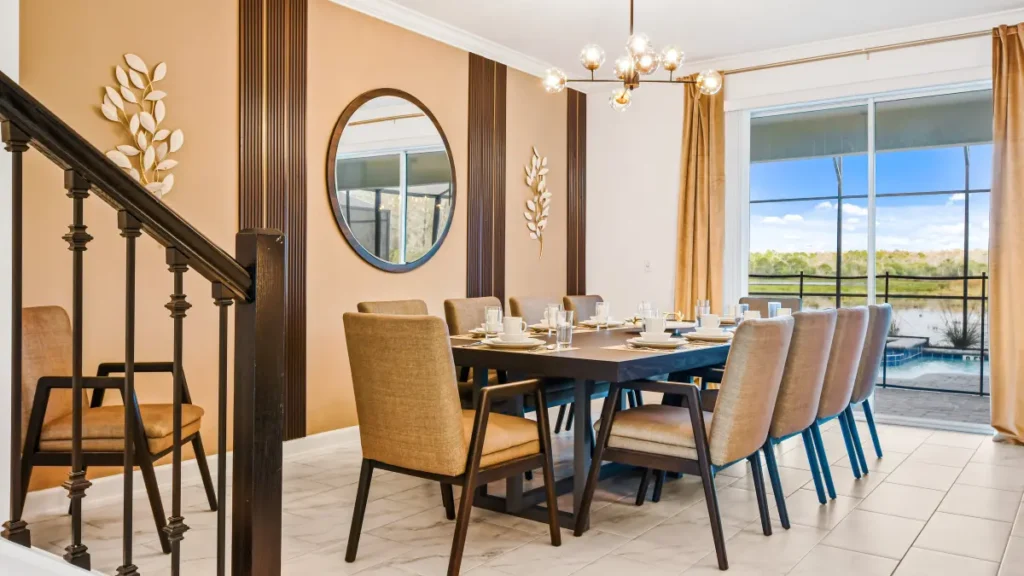
Profitability in the hospitality industry
The adoption of these emerging design trends is not just about enhancing guest experiences; it also plays a crucial role in driving profitability in the hospitality industry.
Sustainable practices, for instance, can significantly reduce operational costs through energy and water savings.
Implementing smart technology can streamline operations and improve efficiency, leading to lower labor costs and higher guest satisfaction.
Moreover, creating flexible and multifunctional spaces maximizes the utility of each area, ensuring that hotels can cater to a variety of guest needs without extensive renovations.
By investing in high-quality, durable materials and focusing on timeless design elements, hotels can reduce maintenance costs and increase the longevity of their interiors.
Ultimately, these design innovations contribute to a more attractive, functional, and cost-effective hospitality environment that boosts both short-term revenue and long-term profitability. Let Veranda Interiors help you!

 Scroll Down
Scroll Down